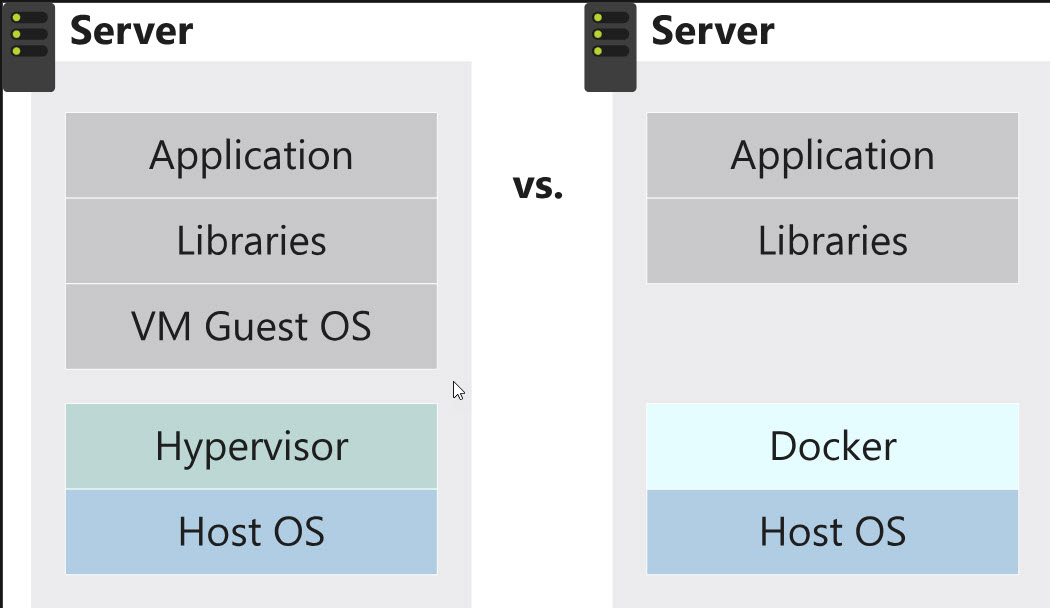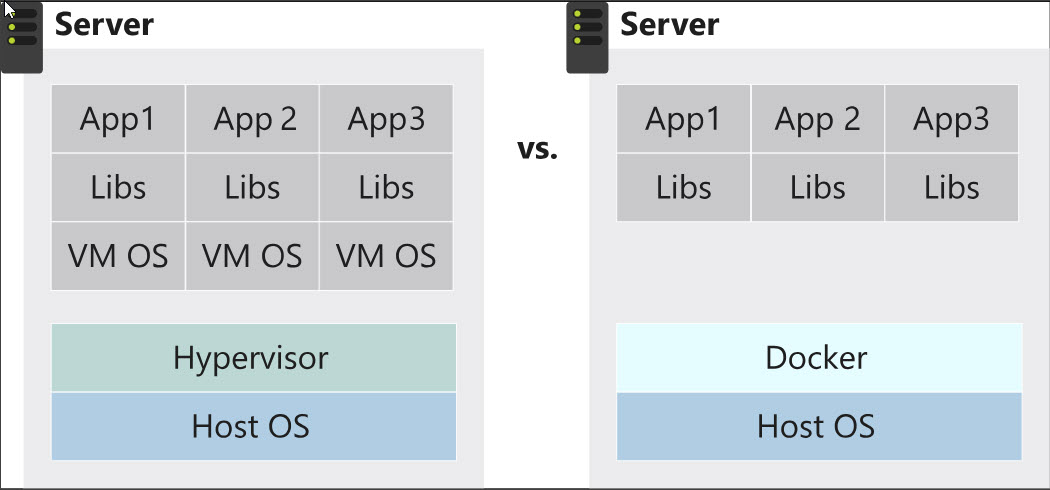Docker 5 - When to use Docker Containers
Benefits of Using Docker Containers:
Efficient Hardware Use:
 Efficient Hardware Use
Efficient Hardware Use- Containers run without needing a separate virtual machine (VM), relying on the host kernel, saving resources like disk space, memory, and CPU.
Container Isolation:
 Container Isolation
Container Isolation- Docker containers run securely on the same host without affecting each other.
- Data storage and network configurations can be customized to isolate or share between containers.
Application Portability:
- Containers run on various environments (desktops, servers, VMs, cloud) with fast startup and redeployment times.
- Ideal for scaling and moving applications across different platforms.
Application Delivery:
- Containers standardize the distribution of applications, facilitating continuous integration and faster deployment cycles.
- Developers focus on building software, while operations focus on deployment and management.
Managing Hosting Environments:
- Containers allow flexible environment management, making it easier to update, patch, and manage applications without affecting others.
- Resource limits and updates are managed per container.
Cloud Deployments:
- Docker is the default container architecture for many cloud services, including Azure Container Instances, Azure App Service, and Azure Kubernetes Services.
When Not to Use Docker Containers:
Security and Virtualization Concerns:
- Containers share a single host OS kernel, which can be a security risk.
- Windows offers Hyper-V isolation mode for additional security, isolating containers at the hypervisor level.
- Some applications may not benefit from containerization and might be better suited for VMs.
Service Monitoring Challenges:
- Managing containers can be more complex than traditional VM setups.
- Docker provides basic monitoring tools like
docker stats, but detailed, long-term monitoring requires third-party tools. - Aggregating and analyzing service data inside containers can be challenging without additional software.
This post is licensed under CC BY 4.0 by the author.